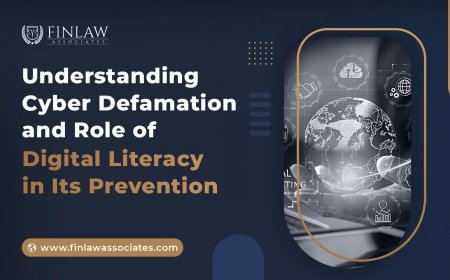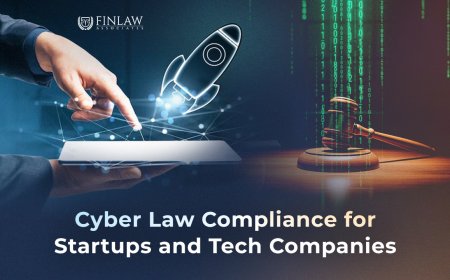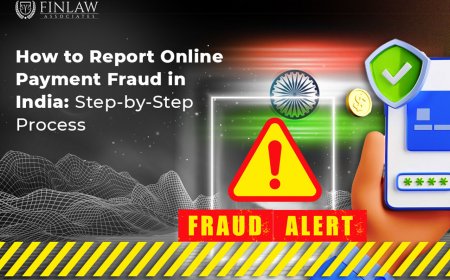Why Your Next Click Matters: A Cyber Crime Advocate's Plea for Awareness
Cyber Crime Advocate P.M. Mishra highlights the crucial role of cybersecurity awareness in preventing devastating digital threats and protecting personal data.

Introduction:
Story of Neena's phishing incident:
Neena, a marketing executive at a growing startup, got an urgent email from what appeared to be her company's IT department in the early hours of the day. The letter, which was festooned with official emblems and urgent wording, asked Neena to confirm her login credentials owing to an alleged security issue. Neena was concerned and, without hesitation, clicked on the link in the email and entered her account and password.
Neena had no idea that this single click would set off a chain reaction that would jeopardize not just her personal information but also the company's security. Unbeknownst to her, the email was a well-planned phishing attempt intended to deceive unsuspecting staff into disclosing important information. Within minutes, thieves obtained illegal access to the company's sensitive databases, taking client data and valuable information.
Neena's tale isn't unusual. Every day, individuals and organizations throughout the world fall victim to cybercrime scams, with terrible results. This story demonstrates a crucial fact in today's digital age: an apparently simple click may have serious consequences, affecting personal money, professional reputations, and organizational stability.
Importance of awareness in cybersecurity
I’m Adv. P.M. Mishra and as a cyber crime advocate, I've seen firsthand the devastating effects of such crimes on individuals and businesses. This essay delves into the widespread problem of cybercrime, emphasizes the necessity of cybersecurity knowledge, and argues for proactive ways to protect against digital threats. Join me as we explore why your next click is more important than ever before.
Cybercrime refers to a wide range of illegal operations carried out using digital methods, which pose serious hazards to individuals, corporations, and society as a whole. Understanding the various forms of cybercrime and its consequences is critical for raising cybersecurity awareness and reducing risks. Here's an investigation of several cybercrimes and their consequences, as well as cybercriminals' strategies and the significance of internet vigilance:
Types of Cybercrime and Their Impacts:
Identity Theft:
Identity theft is the unlawful use of another person's personal information (such as Social Security numbers, credit card numbers, or login passwords) to conduct fraud or other crimes. Victims may suffer financial losses, lowered credit ratings, and problems in addressing fraudulent acts. It can also cause reputational damage and mental grief.
Data Breaches:
Data breaches occur when unauthorized parties gain access to, steal, or reveal sensitive information (such as customer details, financial data, or intellectual property). Organizations may face financial fines, legal responsibilities, and a loss of consumer confidence. Individuals who are affected may face identity theft, fraudulent transactions, and privacy violations.
Financial Scams:
Financial scams include a variety of techniques that trick people into supplying money or sensitive information under false pretences, such as investment fraud, lottery scams, and bogus charities. Victims may incur enormous financial losses, irreversible harm to their personal finances, and mental distress. Scams aimed at disadvantaged communities can deepen socioeconomic inequality.
Phishing and Social Engineering:
Phishing occurs when cybercriminals use misleading emails, texts, or websites that look authentic to fool people into disclosing personal information or clicking on dangerous links.
Social engineering is the use of manipulative strategies to compel others to provide information or do activities that benefit the attacker.
Successful phishing and social engineering assaults can result in compromised accounts, illegal access to networks, and financial fraud. Organizations may face operational difficulties and reputational harm.
Tactics Used by Cybercriminals:
Malware and Ransomware: They are types of malicious software that are used to gain unauthorized access, steal data, or disrupt operations. Ransomware encrypts files and demands money for decryption, jeopardizing data integrity and business continuity.
Botnets and DDoS Attacks: Botnets are networks of hacked devices (such as PCs or IoT devices) that attackers use to execute distributed denial-of-service (DDoS) attacks, which overload targeted systems and cause downtime.
Insider Threats: Trusted persons within businesses may purposefully or accidentally abuse their access rights to steal data, ruin operations, or jeopardize security.
Role of a Cyber crime Advocate
A cyber crime advocate is a critical player in today's digital world, specialized in legal defense and advocacy for cyber-related charges. These advocates are educated to understand the complicated world of cybercrime legislation, providing crucial assistance to individuals and companies facing cyber dangers. They provide legal representation in matters involving identity theft, data breaches, financial frauds, and other digital crimes, ensuring that clients' rights are safeguarded and justice is pursued through legal means. Their work is critical in raising cybersecurity awareness, encouraging appropriate legislation, and keeping hackers accountable. In a world where technology is fast evolving and cyber dangers are becoming more complex, cyber crime advocates act as defenders of digital rights and guardians of justice, working to maintain integrity and protect the digital well-being of their clients and communities alike.
Digital Footprints
Individual online behaviors can have substantial and far-reaching consequences because of the idea of digital footprints. Every click, share, remark, and transaction leave a traceable record in the wide terrain of the internet, establishing a digital footprint that can have an impact on personal and professional consequences. These digital footprints help to shape people's online reputations, impacting how they are seen by peers, employers, and future enemies. Furthermore, data created by online activities may be collected, analyzed, and possibly used by a variety of parties, including advertisers, hackers, and even governments. This data may be used to personalize marketing campaigns, target individuals for phishing attacks, and make hiring choices. As a result, keeping awareness of one's digital footprint and engaging in appropriate online activity is critical. Individuals who understand the consequences of their online behaviors may better safeguard their privacy, manage their digital identities, and constructively contribute to the digital ecosystem.
In today's linked world, our digital activities have far-reaching consequences that extend beyond the displays we engage with every day. Each click, share, or post influences not just our own online appearance, but also the larger digital environment. It is more important than ever to prioritize digital responsibility.
Consider this: Your online actions, including the websites you visit and the information you provide, leave a digital footprint that can have an impact on your reputation, security, and opportunities. Every decision is important, whether it's protecting personal data from cyber dangers, verifying the veracity of online content before sharing it, or being aware of how your digital activities reflect on your character.
As a cyber crime advocate, I've seen firsthand the repercussions of ignoring digital responsibility—identity theft, financial frauds, and reputational damage—all caused by a lack of knowledge or preparation. It's not only about safeguarding oneself; it's also about ensuring the integrity of our digital community. By adopting digital responsibility, you help to create a safer online environment for everyone.
Let us commit to educating ourselves and others on cybersecurity best practices, thinking critically before clicking or sharing, and advocating for policies that safeguard digital rights. Together, we can realize the potential of technology while avoiding its drawbacks.
Take ownership of your digital presence now. Your online behaviors influence the future of our digital world.
What's Your Reaction?















